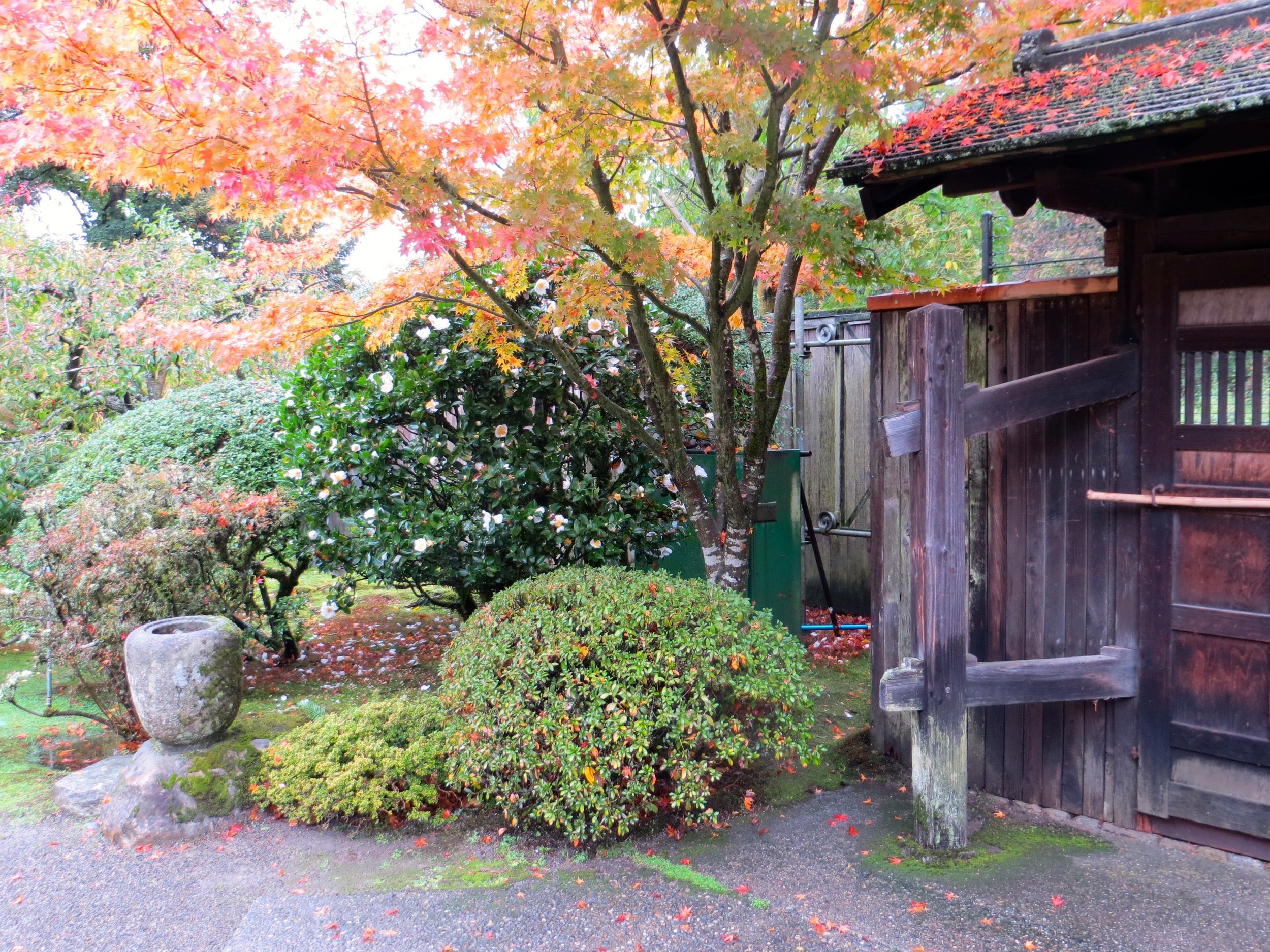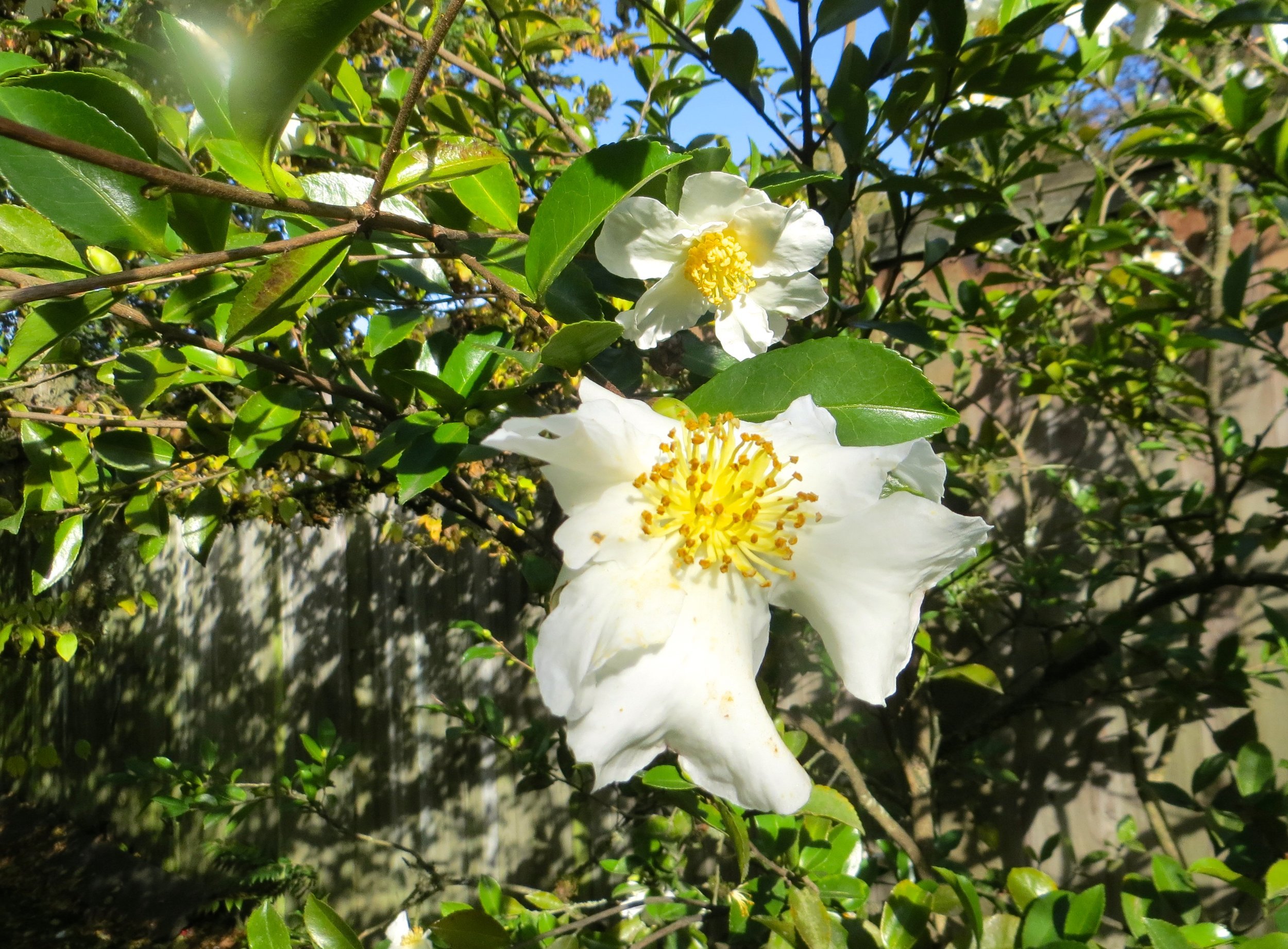The Essential Reading List for 2021
By Corinne Kennedy
Dokusho no Aki - 読書の秋, or “Autumn, The Season for Reading” is a common saying in Japan, and it’s a popular time of the year for all kinds of themed reading lists to be published. As the days grow colder and the nights get longer here in Seattle, books are a welcome companion. For your fall enrichment, Corinne Kennedy has compiled an eclectic list of 11 titles recommended by the Garden’s docents (Arboretum Foundation Unit 86). Three are works of fiction – one by a Japanese American author, and two by Japanese authors living in Germany and Britain; and eight are non-fiction—including books on plants, Japanese crafts & garden design, and Japanese American history (including a “graphic novel” about historical figures).
FICTION (novels)
The autumn leaves of Siebold maple (Acer sieboldianum) in the Seattle Japanese Garden. (photo: Aleks Monk, 10/19/11).
The Book of Form and Emptiness, by Ruth Ozeki (2021). Teenager Benny Oh has recently lost his father in a tragic accident, and feels overwhelmed by the voices of objects all around him—at home, in the street, and at school. He seeks refuge from the voices and from his mother, who has become a hoarder, finding solace in the public library, where he meets a Book who narrates his life. “With its blend of sympathetic characters, riveting plot, and vibrant engagement with everything from jazz, to climate change, to our attachment to material possessions, The Book of Form and Emptiness is classic Ruth Ozeki—bold, wise, poignant, playful, humane and heartbreaking.” [from the publisher]
The Emissary, by Yoko Tawada (2014). English translation (from the Japanese) by Margaret Mitsutani (2018). Written by a Japanese author living in Germany, this slim surrealist novel is set in a dystopian Japan that has been transformed by an irreparable disaster. The elderly are strong and long-lived, but children are born aged and weak. Cared for by his great-grandfather, Mumei is “frail and gray-haired.” Yet “he is a beacon of hope: full of wit and free of self-pity… Tawada creates an irrepressibly funny, playfully joyous novel, with a legerdemain uniquely her own.” [from the publisher]
Klara and the Sun, by Kazuo Ishiguro (2021). Ishiguro was born in Japan, but has lived in Britain since the age of five, becoming a British citizen in his twenties. Winner of the 2017 Nobel Prize in Literature, he writes in English and considers himself a British author. In this novel, an “Artificial Friend” named Klara waits in a store, hoping that a customer will take her home. “Ishiguro looks at our rapidly changing modern world through the eyes of an unforgettable narrator to explore a fundamental question: what does it mean to love?” [from the publisher]
NON-FICTION (plants and nature)
Glowing fall color in the Seattle Japanese Garden—on the roof of the original East Gate, and on the leaves of a nearby Japanese maple. (photo: Aleks Monk)
Moss Gardening Including Lichens, Liverworts, and Other Miniatures, by George Schenk (1997). This is not a dry scientific treatise, but an expansive look at cryptograms (spore-bearing plants) by a plantsperson who views them as garden friends, “garden mood-makers, as mystical as any tree.” Schenk’s writing style is inviting—and to me delightful—and his book much more than a manual on how to plant and maintain mosses. Beautifully illustrated, with a variety of photographs (including plant close-ups as well as broader views of moss carpets and Japanese temple gardens), it helps the reader understand, appreciate, and learn how to landscape with these unique plants.
The Hidden Life of Trees: What They Feel, How They Communicate—Discoveries From a Secret World, by Peter Wohlleben (2015). English translation (from the German) by Jane Billinghurst (2016). The author worked for the German forestry commission for over twenty years, and now runs a German forest academy that supports sustainable forest management and forest education for children and adults. Although he uses anthropomorphic terms such as friendship and parenting to make information more accessible, Wohlleben’s book is based on extensive research by scientists investigating how trees communicate and interact with one another. One fascinating example: trees issue scents and sound vibrations that serve to warn neighboring plants of dangers such as drought and insect attacks.
NON-FICTION (Japanese crafts and garden design)
Japanese maple trees displaying glorious fall color in the Seattle Japanese Garden. The historic stone bridge and a nearby Kasuga lantern are in the foreground. (photo: Mary Ann Cahill)
Japanese Gardening: A Practical Guide to Creating a Japanese-Style Garden with 700 Step-By-Step Photographs, by Charles Chesshire (2020). This beautiful book is a very practical, step-by-step resource for readers seeking to incorporate Japanese elements into their home gardens. Chapters cover the historical context, five classic garden styles (pond gardens, dry gardens, tea gardens, stroll gardens, and courtyard gardens), fifteen practical projects, and a plant directory. Clear instructions are illustrated by photographs as well as detailed plans and diagrams.
Water, Wood, and Wild Things: Learning Craft and Cultivation in a Japanese Mountain Town, by Hannah Kirshner (2021). An American artist and writer, Kirshner was invited to apprentice with a ‘sake evangelist’ in the mountain village of Yamanaka. There she met a community of craftspeople, farmers, and foragers—including woodturners, hunters, a paper artist, and a man making charcoal. Her book is “an ode to a place and its people, as well as a profound examination of what it means to sustain traditions and find purpose in cultivation and craft.” [from the publisher]
NON-FICTION AND FICTION (Japanese American history)
The elegant white flowers of Camellia sasanqua, blooming in autumn. (photo: Aleks Monk)
Becoming Nisei: Japanese American Urban Lives in Prewar Tacoma, by Lisa M. Hoffman and Mary L. Hanneman (2021). The authors, both professors at UW Tacoma, draw on interviews and archival sources to create a portrait of a community— Tacoma’s nihonmachi (Japan Town) in the years before World War II—whose history has been forgotten. By the 1920s and 1930s, it was a vibrant community with a large population of first-generation Japanese immigrants (Issei) and their second-generation children (Nisei), with the secular Tacoma Japanese Language School at its center. Based on interviews with over forty Nisei who studied there, Becoming Nisei explores the daily lives of Japanese American children in the prewar years—children who both absorbed and resisted the traditional values and practices of their parents’ generation and the school.
Facing the Mountain: A True Story of Japanese American Heroes in World War II, by Daniel James Brown (2021), author of The Boys in the Boat. In coordination with Densho, a Seattle nonprofit that preserves the oral histories of Japanese Americans incarcerated during World War II, the author chronicles the wartime experiences of four young Japanese American men from Hawaii and the U.S. West Coast. Three volunteered with the segregated, all-Japanese American 442nd Regimental Combat Team and fought in Europe; the fourth resisted, in a test case of the government’s right to incarcerate Japanese Americans without due process, and went to prison. Brown weaves together their stories with the experiences of their families and parents—immigrants who were forced to give up their homes and businesses and relocate to incarceration camps far from the West Coast. “An insightful portrait of exceptional heroism amid deeply embedded racism.” [Kirkus Reviews]
Finding Solace in the Soil: An Archeology of Gardens and Gardeners at Amache, by Bonnie J. Clark (2020). A deeply researched account of how Japanese American gardeners cultivated community while imprisoned during World War II at the Amache incarceration camp, located in Colorado. Topics include the types of gardens created at Amache, how they relate to Japanese and Japanese American traditions, and how the gardeners found creative ways to utilize limited resources. The author, an archeologist, also covers the process of archeological reconstruction, citing not only physical evidence (seeds, garden artifacts, and other material evidence), but also oral histories, archival data (governmental records and personal letters), and personal photographs.
We Hearby Refuse: Japanese American Resistance to Wartime Incarceration, by Frank Abe and Tamika Nimura (2021). Illustrated by Ross Ishikawa and Matt Sasaki. Based on extensive research, this graphic novel, reveals the little-known but real life stories of resistance by three young Japanese Americans—second-generation Nisei and thus American citizens—who were incarcerated during World War II in War Relocation Authority camps. Co-published by the Wing Luke Museum of the Asian Pacific American Experience and Chin Music Press, it weaves together the stories of Jim Akutsu (who refused to be drafted from the Minidoka camp after being classified as an enemy alien), Hiroshi Kashiwagi (who refused to sign a loyalty oath at Tule Lake, and later renounced his U.S. citizenship), and Mitsuye Endo (who refused a chance to leave the Topaz camp so her legal case could reach the U.S. Supreme Court).
Corinne Kennedy is a Garden Guide, a frequent contributor to the Seattle Japanese Garden blog, and retired garden designer.




